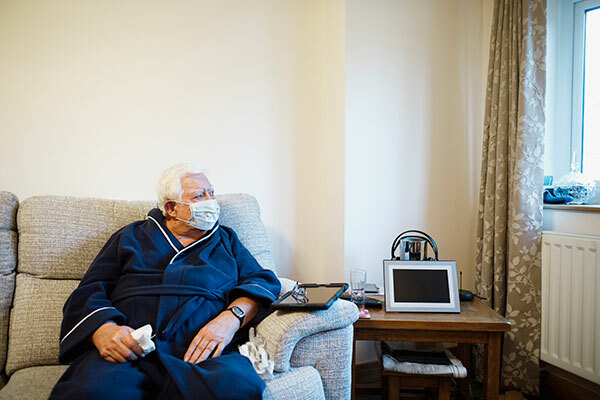You are viewing 1 of your 1 free articles
What are the longer-term lessons for care and support?
The aspirations of our older population could change dramatically as a result of the ongoing pandemic. We need to be focused on what that means for the future provision of care and support, writes Martin Hilditch
The awful impact of the pandemic on the care sector and many of the UK’s older population received much focus over the first few months of the pandemic.
And yet as the risk level ramped up this week, there was relatively little attention devoted to what’s next for care and support providers and the people who live in their homes and use their services.
We’ve been speaking to a number of providers about their thoughts and concerns ahead of a second wave.
The testing regime is still clearly a significant concern, with Vic Rayner from the National Care Forum describing the testing situation as “fairly chaotic” this week, with many providers waiting significant periods of time for test results.
It’s a disgraceful state of affairs at this stage of proceedings when the potential impact on residents is so severe – and something we will continue to scrutinise over the coming weeks.
There are other challenges which we need to start talking about, too. First, we need to have a stronger focus on spreading learning and making sure that good practice travels. With the pandemic into its sixth month we need to have a national conversation about what that means for residents and their families. Providers certainly flag obvious concerns about isolation and loneliness. Some associations, such as Glebe, are looking at innovative ways to ensure families will still be able to visit even under stricter lockdown measures. We need to make sure that learning is swiftly shared and effective solutions rolled out – and I’d certainly encourage social landlords to get in touch with us so we can help flag these approaches.
There is also a question which I flagged this week at our Ageing in Place conference about what impact the pandemic will have on older people’s housing aspirations in the medium to long term.
What will it mean for occupancy levels in care homes for starters? And what about people’s desire to downsize? What types of accommodation have proved easier to manage and deliver a decent quality of life – and which have failed the pandemic test? What knock-on impact does that have on business models and the design of properties moving forward? And to what extent are older people getting the chance to co-design services?
It’s a bit of a magic eye picture right now. But while the focus is on the here and now, in the background long-term care and support models are being reshaped and rewritten.
Martin Hilditch, editor, Inside Housing
Sign up for our daily newsletter
Already have an account? Click here to manage your newsletters













